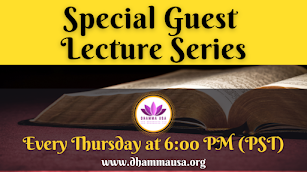Buddhist Cultural Exchange and Regional Influence: An Academic Overview
By Nivitigala Sumitta Thero (Bhante Sumitta)
Abstract
Buddhism, originating in ancient India, has undergone extensive cultural exchange and regional influence as it spread across Asia. This article examines the ways in which Buddhism interacted with various cultures, leading to significant adaptations and influences on art, philosophy, and social practices. By exploring key regions—such as Central Asia, China, Japan, and Southeast Asia—this article highlights the dynamic process of cultural exchange and the resultant transformations within Buddhist traditions.
Introduction
Buddhism’s spread from its Indian origins to other parts of Asia represents a remarkable example of cultural exchange and regional influence. As Buddhism traversed diverse cultural landscapes, it adapted to and influenced various local traditions and practices. This article explores the mechanisms and impacts of Buddhist cultural exchange across different regions, focusing on art, philosophy, and social practices.
Central Asia: The Transmission of Buddhist Ideas
1. The Role of the Silk Road
Central Asia played a crucial role in the transmission of Buddhism from India to China, Korea, and Japan. The Silk Road, a network of trade routes connecting East and West, facilitated the movement of Buddhist texts, artifacts, and ideas. According to Richard Foltz in Religions of the Silk Road, Central Asian cities such as Samarkand and Khotan were pivotal in this cultural exchange, serving as hubs where Buddhist monks, traders, and scholars interacted with local cultures.^1
2. Artistic Adaptations
Central Asia also saw the adaptation of Buddhist art and architecture. The cave monasteries of Dunhuang, for example, showcase a fusion of Indian Buddhist iconography with local artistic traditions. In The Dunhuang Caves and the Spread of Buddhism in Central Asia, James C. Scott discusses how these caves reflect both Indian influences and unique Central Asian artistic elements, illustrating the dynamic nature of cultural exchange.^2
China: Sinicization and the Evolution of Buddhism
1. The Sinicization of Buddhism
In China, Buddhism underwent significant adaptation and integration with existing Confucian and Daoist traditions. The process of Sinicization led to the development of distinct Chinese Buddhist schools, such as Chan (Zen) and Pure Land Buddhism. In The Spread of Buddhism in China, Ching-Yuan Liu explores how Chinese Buddhist masters, like Hui Neng, contributed to the development of new philosophical and meditative practices that reflected local cultural and philosophical concerns.^3
2. Influence on Art and Literature
Buddhism also had a profound impact on Chinese art and literature. The integration of Buddhist themes into Chinese painting and poetry is well documented. In Chinese Buddhist Art and Architecture, Michael Sullivan describes how Buddhist iconography influenced Chinese visual arts, leading to the creation of iconic works such as the Longmen Grottoes and the famous Buddhist murals of Dunhuang.^4
Japan: The Integration of Buddhism into Japanese Culture
1. Early Introductions and Adaptations
Buddhism entered Japan from Korea in the 6th century and was initially met with resistance from indigenous Shinto practitioners. However, over time, Buddhism became deeply integrated into Japanese culture, leading to the development of distinct Japanese Buddhist traditions. In Buddhism in Japan: Its Early History and Development, Edwin O. Reischauer discusses how Japanese Buddhists adapted Chinese and Korean practices to fit local needs, resulting in the emergence of unique schools such as Nichiren and Shingon Buddhism.^5
2. Artistic and Cultural Impact
Buddhism significantly influenced Japanese art and culture. The creation of iconic Buddhist temples, such as Todai-ji and Kinkaku-ji, and the development of traditional Japanese arts like Zen gardening and tea ceremonies, demonstrate Buddhism’s lasting impact on Japanese cultural practices. In Japanese Buddhist Art, Robert W. Chard examines how Buddhist motifs and aesthetics shaped Japanese visual arts and cultural expressions.^6
Southeast Asia: The Spread and Localization of Buddhism
1. The Adoption and Adaptation of Buddhism
In Southeast Asia, Buddhism adapted to local cultures and practices, leading to the development of Theravada Buddhism, which became predominant in countries such as Thailand, Myanmar, and Cambodia. In Theravada Buddhism in Southeast Asia, Donald K. Swearer explores how Buddhism was localized through the incorporation of indigenous rituals and the adaptation of Buddhist monastic practices to local contexts.^7
2. Architectural Innovations
Southeast Asia is known for its distinctive Buddhist architecture, including the famous temples of Angkor Wat and Bagan. In Angkor: An Introduction to the Temples, Michael Freeman and Claude Jacques describe how the architectural styles and religious practices of Buddhism influenced the construction of grand temple complexes in Southeast Asia.^8 These architectural achievements reflect a synthesis of Buddhist ideas with local artistic and cultural traditions.
Conclusion
Buddhist cultural exchange and regional influence highlight the dynamic nature of Buddhism as it spread across Asia. From Central Asia to Southeast Asia, Buddhism adapted to and influenced diverse cultural contexts, resulting in significant transformations in art, philosophy, and social practices. By examining these regional adaptations and exchanges, we gain a deeper understanding of Buddhism’s role in shaping and being shaped by the cultures it encountered.
References
- Richard Foltz, Religions of the Silk Road: Premodern Patterns of Globalization (New York: St. Martin's Press, 1999).
- James C. Scott, The Dunhuang Caves and the Spread of Buddhism in Central Asia (Cambridge: Cambridge University Press, 1995).
- Ching-Yuan Liu, The Spread of Buddhism in China (New York: Columbia University Press, 1972).
- Michael Sullivan, Chinese Buddhist Art and Architecture (London: Thames & Hudson, 1984).
- Edwin O. Reischauer, Buddhism in Japan: Its Early History and Development (Tokyo: Kodansha International, 1964).
- Robert W. Chard, Japanese Buddhist Art (London: Phaidon Press, 1993).
- Donald K. Swearer, Theravada Buddhism in Southeast Asia (Cambridge: Cambridge University Press, 1995).
- Michael Freeman and Claude Jacques, Angkor: An Introduction to the Temples (Bangkok: River Books, 2005).
































0 comments:
Post a Comment
Your comments and feedback are very helpful to us in improving our posts. We really appreciate your time. Thank you!
Dhamma USA Team.